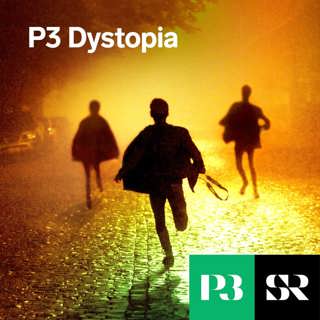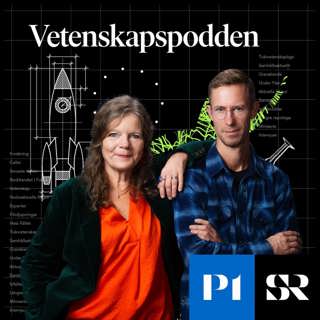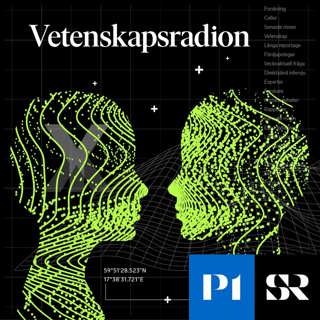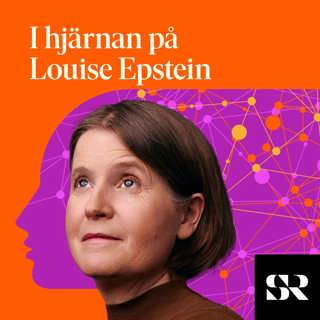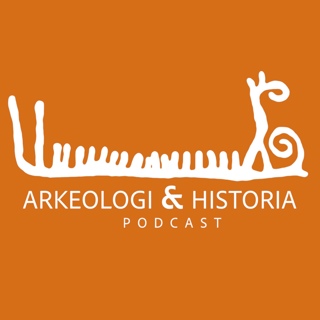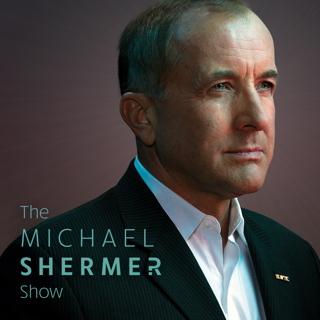
8. Dr. Priyamvada Natarajan — Mapping the Heavens: The Radical Scientific Ideas That Reveal The Cosmos
Dr. Priyamvada Natarajan is a cosmologist and theoretical astrophysicist from Yale University, specializing in dark matter, dark energy, and black holes. She also holds the Sophie and Tycho Brahe Professorship of the Dark Cosmology Centre, Niels Bohr Institute, at the University of Copenhagen, Denmark. She is passionate about sharing science with the general public and in her new book she provides a tour of the “greatest hits” of cosmological discoveries—the ideas that reshaped our universe over the past century. The cosmos, once understood as a stagnant place, filled with the ordinary, is now a universe that is expanding at an accelerating pace, propelled by dark energy and structured by dark matter. Priyamvada Natarajan is at the forefront of this research—an astrophysicist who literally creates maps of invisible matter in the universe. In the book, she not only explains for a wide audience the science behind these essential ideas but also provides an understanding of how radical scientific theories gain acceptance. The formation and growth of black holes, dark matter halos, the accelerating expansion of the universe, the echo of the big bang, the discovery of exoplanets, and the possibility of other universes—these are some of the puzzling cosmological topics of the early twenty-first century. Natarajan discusses why the acceptance of new ideas about the universe and our place in it has never been linear and always contested even within the scientific community. And she affirms that, shifting and incomplete as science always must be, it offers the best path we have toward making sense of our wondrous, mysterious universe.
13 Nov 20161h 32min

7. Dr. Benjamin Bergen — What the F: What Swearing Reveals About Our Language, Our Brains, and Ourselves
Dr. Benjamin Bergen is a professor of cognitive science at the University of California, San Diego, and in his new book he explains why profanity is so appealing to us. Let’s face it, we all swear. Whether we’re happy or mad, uttering a four-letter word seems to be a natural occurrence for most of us. But why do we swear, even when we know we’re breaking cultural taboos? Why are some words off limits in certain countries or deemed offensive in past centuries but are considered perfectly tame in others? What does all this g*ddamn swearing tell us about our language and our brains? Bergen has the answers as he illuminates the controversial and complex nature of profanity and its relationship on our culture.
16 Okt 20161h 41min

6. Dr. Stephon Alexander — The Jazz of Physics: The Secret Link Between Music and the Structure of the Universe
In The Jazz of Physics: The Secret Link Between Music and the Structure of the Universe, physicist and jazz saxophonist Dr. Stephon Alexander revisits the ancient realm where music, physics, and the cosmos were one. This cosmological journey accompanies Alexander’s own tale of struggling to reconcile his passion for music and physics, from taking music lessons as a boy in the Bronx to studying theoretical physics at Imperial College. Playing the saxophone and improvising with equations, Alexander uncovered the connection between the fundamental waves that make up sound and the fundamental waves that make up everything else. As he reveals, the ancient poetic idea of the “music of the spheres,” taken seriously, clarifies confounding issues in physics. Dr. Alexander is the Royce Family Professor at Brown University’s Physics Department. In 2013, he won the prestigious American Physical Society Bouchet Award for “his contributions to theoretical cosmology.” He is also a jazz musician, and recently finished recording his first electronic jazz album with Erin Rioux.
22 Maj 20161h 34min

5. Dr. Janna Levin — Gravitational Waves, Black Holes and the Nature of the Cosmos
On Thursday, February 11, 2016, the National Science Foundation made a thrilling announcement: gravitational waves—first predicted by Einstein as part of his general theory of relativity in 1916—had been detected for the first time. This incredible development made front page news and was reported by outlets across the country. How was such a remarkable discovery, a long hundred years after Einstein’s prediction, made possible? In this Science Salon based on her new book, Black Hole Blues and Other Songs from Outer Space, astrophysicist and award-winning writer Dr. Janna Levin tells the epic story of the scientific campaign to record these waves—the holy grail of modern cosmology. A handful of physicists, led by Kip Thorne and Ronald Drever at Caltech and Rainer Weiss at MIT, have been working nearly their entire careers to conceive of, design, and build an instrument sensitive enough to detect gravitational waves. Levin delves into the lives and fates of the scientists, painting compelling portraits of these very human visionaries. She journeys from Los Angeles to Boston, to the LIGO interferometers in Hanford, Washington and Livingston, Louisiana, to the labs, offices, and observatories where the work in this great quest has painstakingly unfolded over the past five decades. Her account of the personalities, surprises, setbacks, and successes is a compelling and intimate portrait of the people and processes of modern science.
10 Apr 20161h 3min

4. Dr. Sean B. Carroll — The Serengeti Rules: The Quest to Discover How Life Works and Why It Matters
How does life work? How does nature produce the right numbers of zebras and lions on the African savanna, or fish in the ocean? How do our bodies produce the right numbers of cells in our organs and bloodstream? In The Serengeti Rules, award-winning biologist and author Sean Carroll tells the stories of the pioneering scientists who sought the answers to such simple yet profoundly important questions, and shows how their discoveries matter for our health and the health of the planet we depend upon. One of the most important revelations about the natural world is that everything is regulated—there are rules that regulate the amount of every molecule in our bodies and rules that govern the numbers of every animal and plant in the wild. And the most surprising revelation about the rules that regulate life at such different scales is that they are remarkably similar—there is a common underlying logic of life. Carroll recounts how our deep knowledge of the rules and logic of the human body has spurred the advent of revolutionary life-saving medicines, and makes the compelling case that it is now time to use the Serengeti Rules to heal our ailing planet.
20 Mars 20161h 35min

3. Dr. Arthur Benjamin — The Magic of Math: Solving for x and Figuring Out Why
The Magic of Math is the math book you wish you had in school. Using a delightful assortment of examples—from ice cream scoops and poker hands to measuring mountains and making magic squares—this book empowers you to see the beauty, simplicity, and truly magical properties behind those formulas and equations that once left your head spinning. You’ll learn the key ideas of classic areas of mathematics like arithmetic, algebra, geometry, trigonometry, and calculus, but you’ll also have fun fooling around with Fibonacci numbers, investigating infinity, and marveling over mathematical magic tricks that will make you look like a math genius! A mathematician who is known throughout the world as the “mathemagician,” Arthur Benjamin mixes mathematics and magic to make the subject fun, attractive, and easy to understand. In The Magic of Math, Benjamin does more than just teach skills: with a tip of his magic hat, he takes you on as his apprentice to teach you how to appreciate math the way he does. He motivates you to learn something new about how to solve for x, because there is real pleasure to be found in the solution to a challenging problem or in using numbers to do something useful. But what he really wants you to do is be able to figure out why, for that’s where you’ll find the real beauty, power, and magic of math. If you are already someone who likes math, this Science Salon will dazzle and amuse you. If you never particularly liked or understood math, Benjamin will enlighten you and—with a wave of his magic wand—turn you into a math lover.
24 Jan 20161h 33min

2. Michelle Feynman — The Quotable Feynman & His Van
Nobel Prize-winning physicist Richard P. Feynman (1918–88) was a towering scientific genius who could make himself understood by anyone and who became as famous for the wit and wisdom of his popular lectures and writings as for his fundamental contributions to science. The Quotable Feynman is a treasure-trove of this revered and beloved scientist’s most profound, provocative, humorous, and memorable quotations on a wide range of subjects edited by his daughter, Michelle Feynman, who will discuss her father’s life and legacy. In addition, physicist Seamus Blackey will bring Feynman’s van, newly restored and recently featured on The Big Bang Theory, so you can get your photograph taken with the famous vehicle featuring Feynman diagrams. Order The Quotable Feynman from Amazon. Our special guest at this salon will be: Dr. Leonard Mlodinow, physicist and author of Feynman’s Rainbow: A Search for Beauty in Physics and in Life and The Upright Thinkers: The Human Journey from Living in Trees to Understanding the Cosmos.
20 Dec 20151h 16min

1. Dr. Lisa Randall — Dark Matter and the Dinosaurs: The Astounding Interconnectedness of the Universe
The renowned Harvard cosmologist and theoretical physicist explores a scenario in which a disk of dark matter—the elusive stuff in the universe that interacts through gravity like ordinary matter, but that doesn’t emit or absorb light—dislodged a comet from the Oort cloud that was ultimately responsible for the dinosaurs’ extinction. Dr. Lisa Randall teaches us an enormous amount about dark matter, our Universe, our galaxy, asteroids, and comets—and the process by which scientists explore new concepts.
22 Nov 20151h 11min



